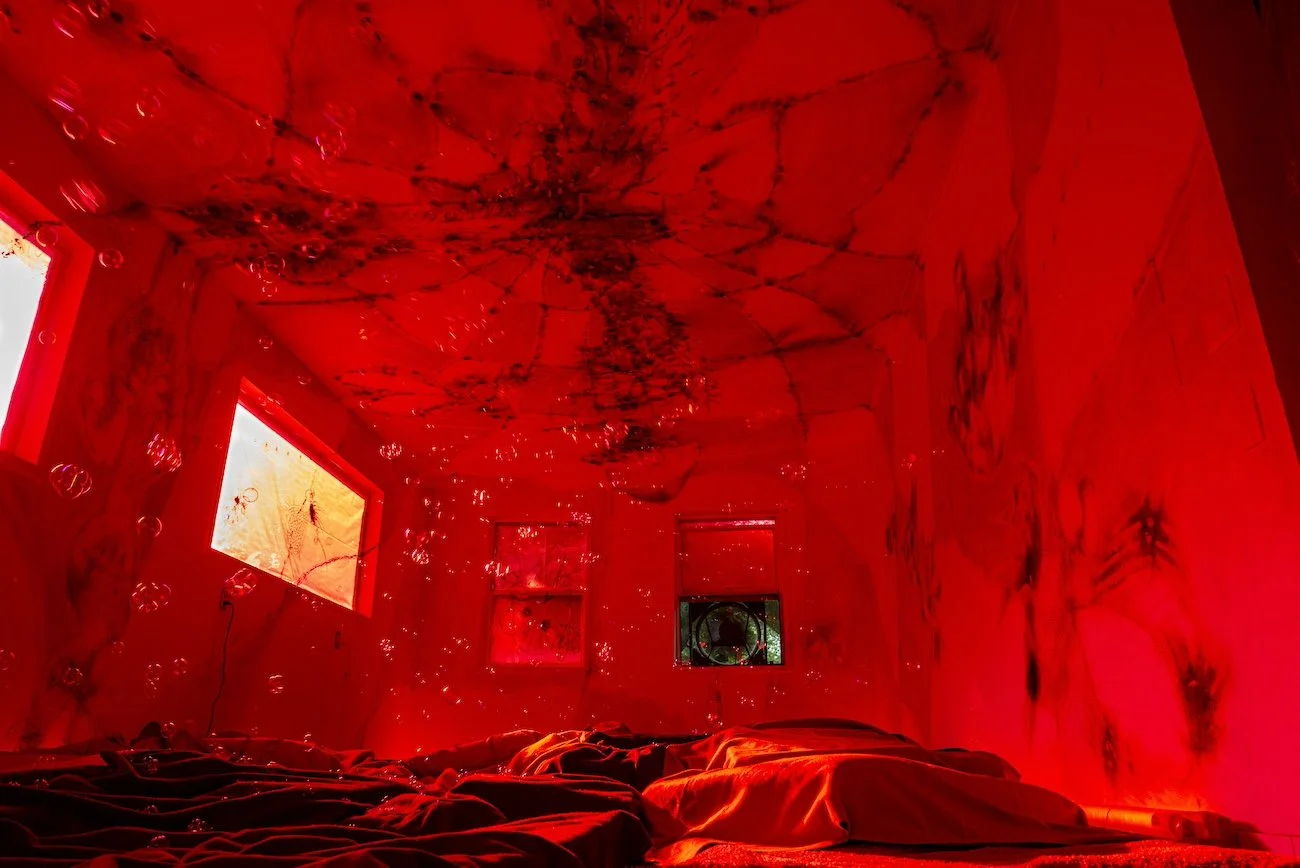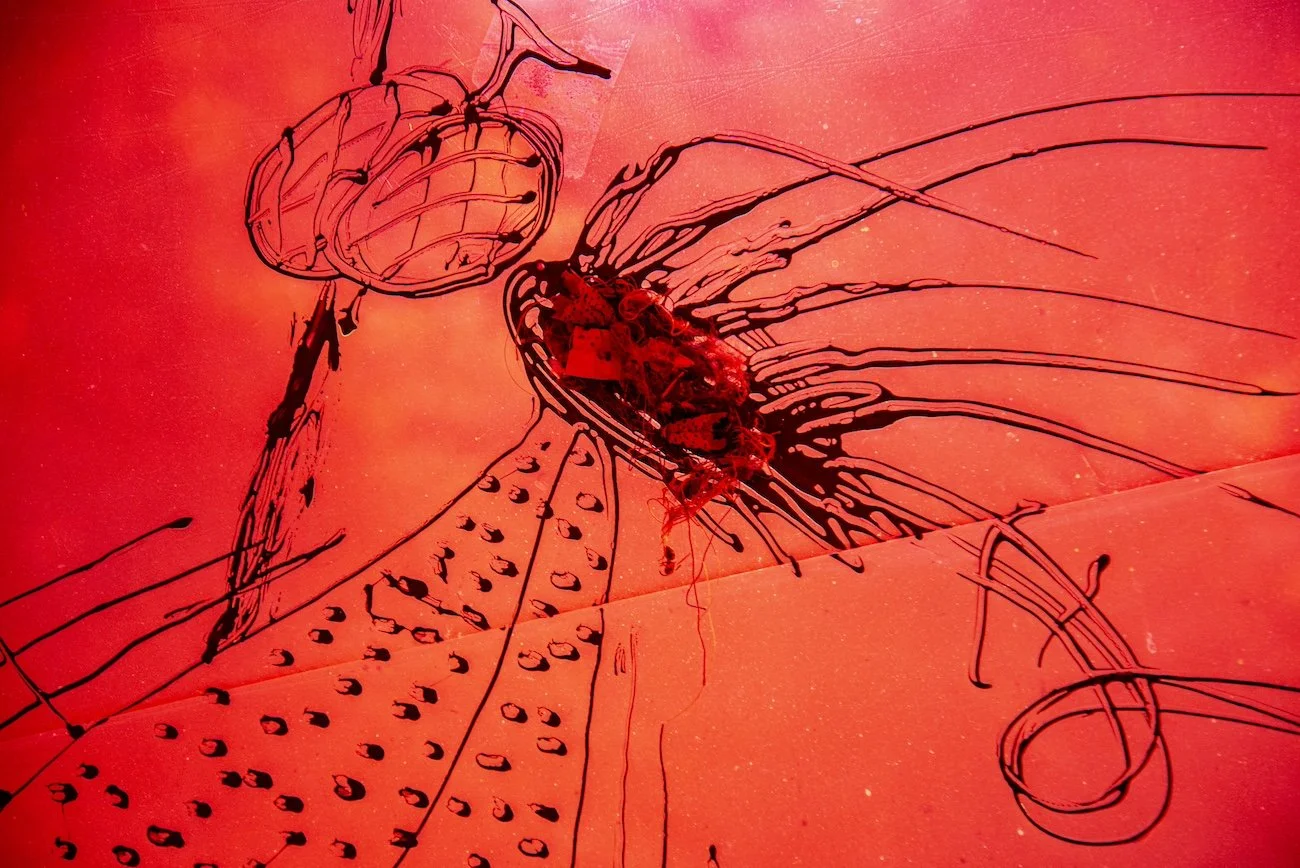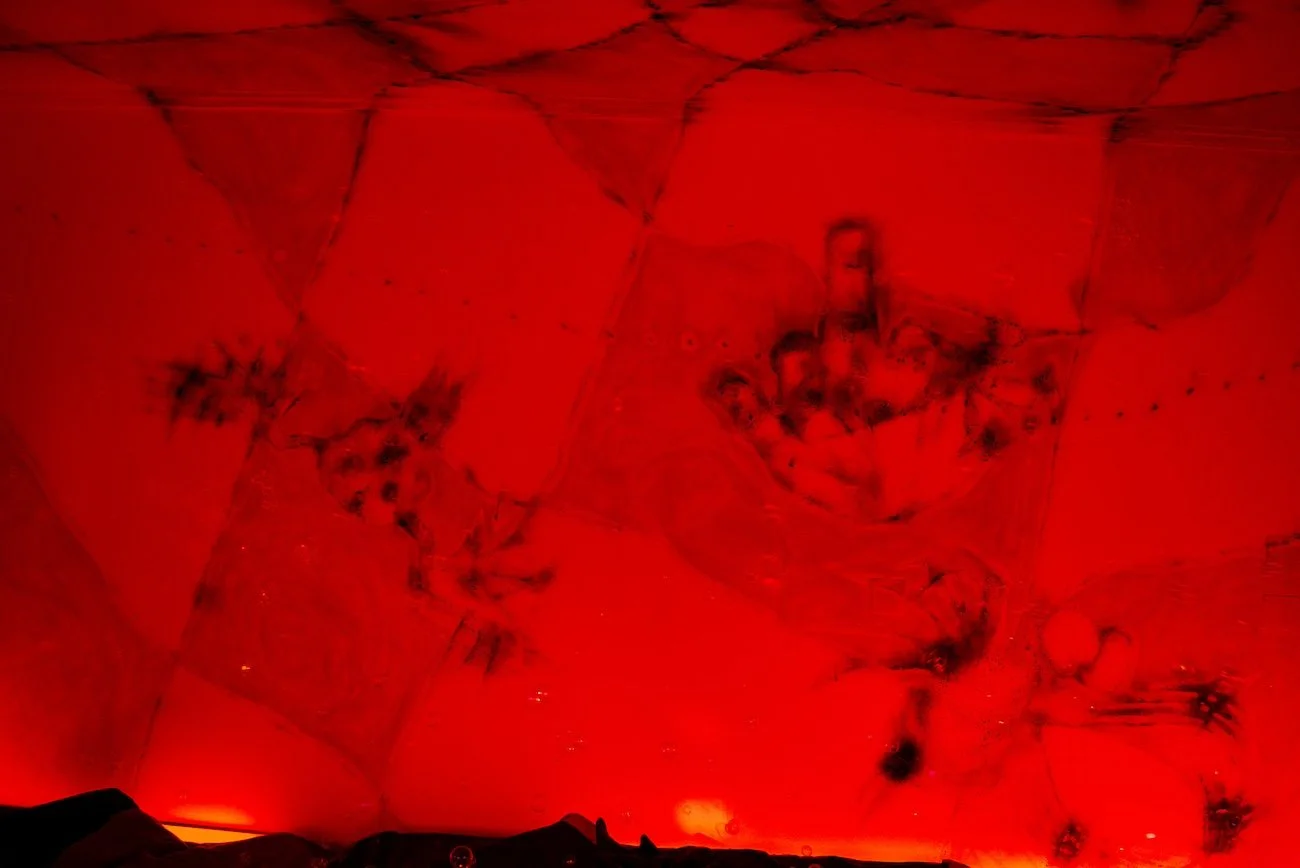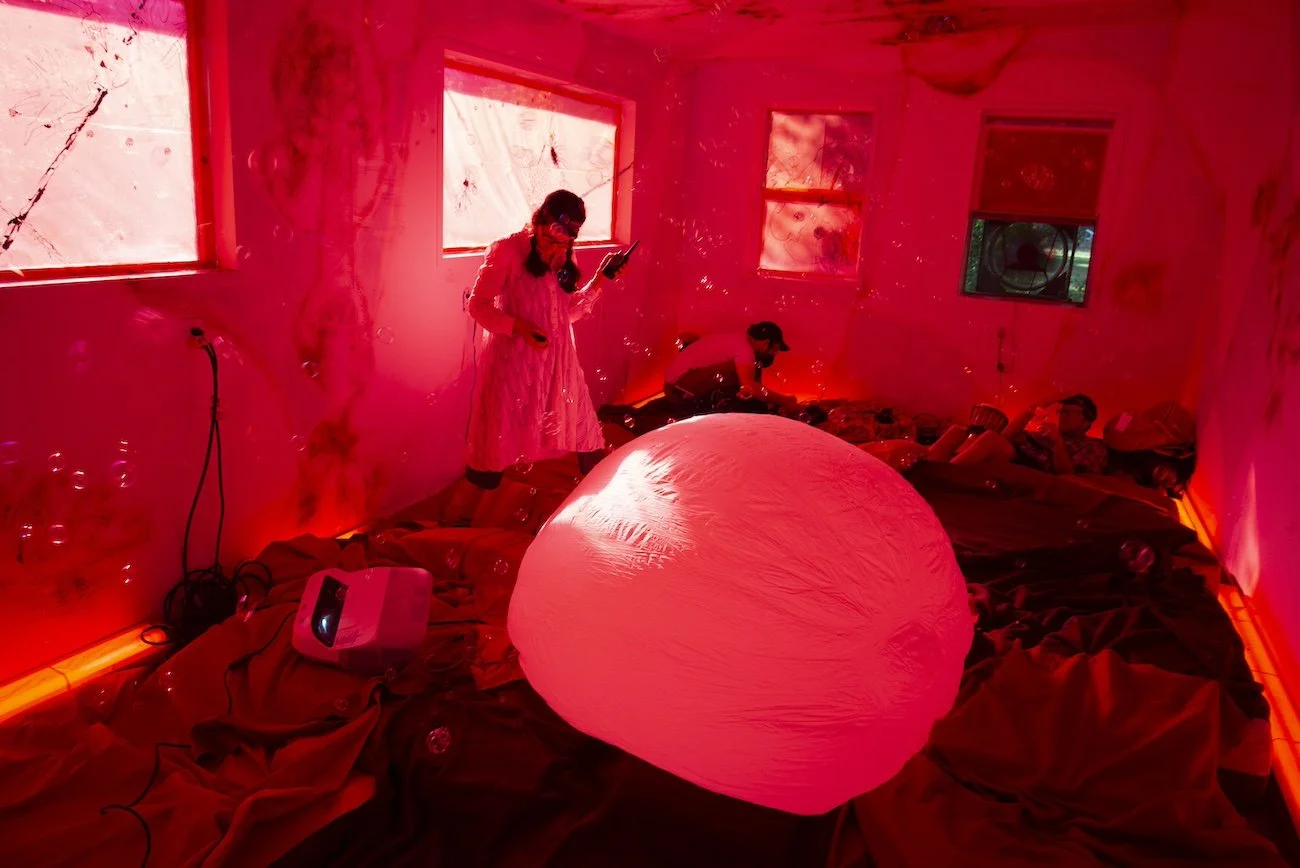Daniel Giordano’s Praxis of Excess
Fleeing upstate from New York City, the art-seeker might find themselves not in white cubes but instead in an apple cold storage warehouse or one of several abandoned schools. Some of these unconventional venues are ad hoc to support Upstate Art Weekend’s programming, while others host regular exhibitions, like Owen Barensfeld’s gallery, The Green Lodge in Chatham, New York. The shed-like structure, attached to a family cabinet shop, does offer its exhibitors four white walls and several windows—but any last hope for propriety flew out of those windows as soon as Daniel Giordano began scribbling testicles on them for his latest solo exhibition, I Knew Your Father When He Had Cojones.
The Newburgh-based artist gained notoriety as a serious sculptor who infuses his work with Italian-American sentiment and naughty-boy antics: among Giordano’s surprising processes and surprising materials, he deep-fries motorbikes. Yet in the past year, he’s digressed from his brand with all the feints of a certified trickster. His March 2025 solo exhibition at Saint Thomas Aquinas College, The Simonetti Effect, boasted a massive Boschian drawing, cartoonish flies painted directly on the window glass, and a dancing inflatable skeleton visible from the campus’s parking lot.
Giordano’s 21st-century memento mori now thrashes its greeting at the entrance to The Green Lodge’s property. The telltale flies have returned on the red-tinted screens, which Giordano installed to hijack the interior’s natural light in the primary installation piece titled Study For Chronos XIV (Jupiter Optimus Maximus) (2025). In a feat of color theory, entering and exiting confounds the eyes, which, having adjusted to the inky darkroom red, must scramble to re-balance upon entering the leafy backyard. Dismissing paint as a mere means to an end, Giordano picked up a blowtorch: his “murals” are negative relief, visible only where surfaces have been replaced by pocks and flaky char.
Among oversized middle fingers and testicles, the motif of the doomsday clock—a mainstay of Giordano’s drawing practice since 2020—returns in the abstract, scorch marks spidering out from the ceiling’s center. In place of the clock’s hand? A mummified opossum strung up with tennis strings, a gift, now affectionately named “Figaro,” from the artist’s neighbor. Meanwhile, noisy fans toss around machine-grade bubbles, making the room’s foam and fabric flooring sticky with soap residue. To cross the threshold into Giordano’s version of The Green Lodge is to experience a rupture from what is natural and outside. It forces dissonance, a sensory bubble-bursting.
Marisa Epse, the independent curator who wrote the accompanying text posted outside of the exhibition’s entrance, referred to Cojones as “site-specific,” while several other shows hosted in the bones of upstate New York’s buildings are similarly billed as “site-responsive.” Shadow Walls’ summer 2025 group exhibition, Repair, curated by Anne-Laure Lemaitre, nods to its former 1930s farm resort mid-restoration state by including variations on the theme of rebuilding. In the exhibition, Giordano refers to his sculpture, Fact I: Macy’s Never Tells Gimbal’s (2020–2022), which lounges against a tree, as a “scab” of previous sculptures: a scrappy repurposing of the past in light of a future.
Forcing its way out of the third dimension, Giordano’s new work in Cojones betrays an evermore heightened reactivity to its surroundings; spaces such as The Green Lodge become a site of transference, of working out what Giordano might himself refer to as “fucked-up-itudes.” After all, the artist keeps a studio in the shell of his family’s coat factory and is familiar with the sight of his neighborhood’s many disused structures. Much like Giordano’s own grungy domain, The Green Lodge’s lack of pretension offers freedom from the regular concerns of, say, insurance.
In his take on the ambient and immersive, Giordano’s dexterity across mediums is activated when released from the confines of a static sculpture and its commercial viability. With its snarky rejoinder of a title, Cojones poses an immaterial middle finger both to sales interests and the “sculptor” label, and perhaps any cognitive neatness in general. Giordano appears here as a maestro wrangling not only disparate materials in composition but disparate tones. Cojones turns inside-out a truthfully discombobulated psyche: the primary burning methods and dead fauna straddle the destructive and macabre, while bubbles and plush textures strike off-key notes from the childlike and playful. The presence of soft obscenities, meanwhile, comes across as the adolescent and petulant passageway between the two.
Giordano’s transformation of The Green Lodge’s interior might come across like a reconstructed memory of a teenage-era bedroom, still singed with ingrown irreverence. It followed, then, that the exhibition’s opening hosted a situation by artist collective the 181, which involved walkie-talkies and the live mixing and looping of sound across the property. The throbbing, feedback-laden aural experience was accompanied by one member pumping up a bulbous balloon until it popped—or perhaps exploded—with a burst of perverse laughter.
Daniel Giordano: I Knew Your Father When He Had Cojones is on view at The Green Lodge from July 17 through August 31, 2025.





